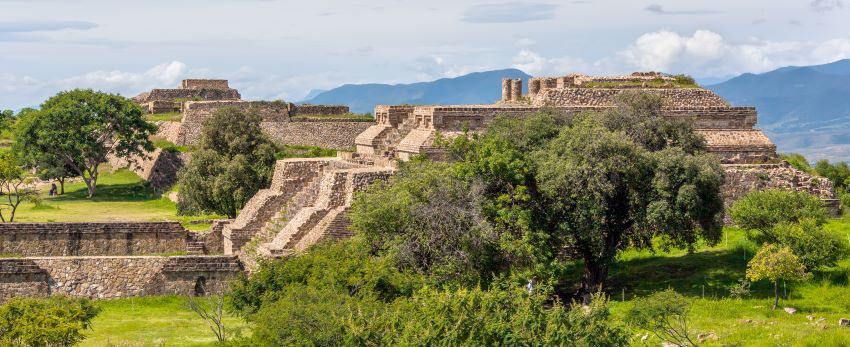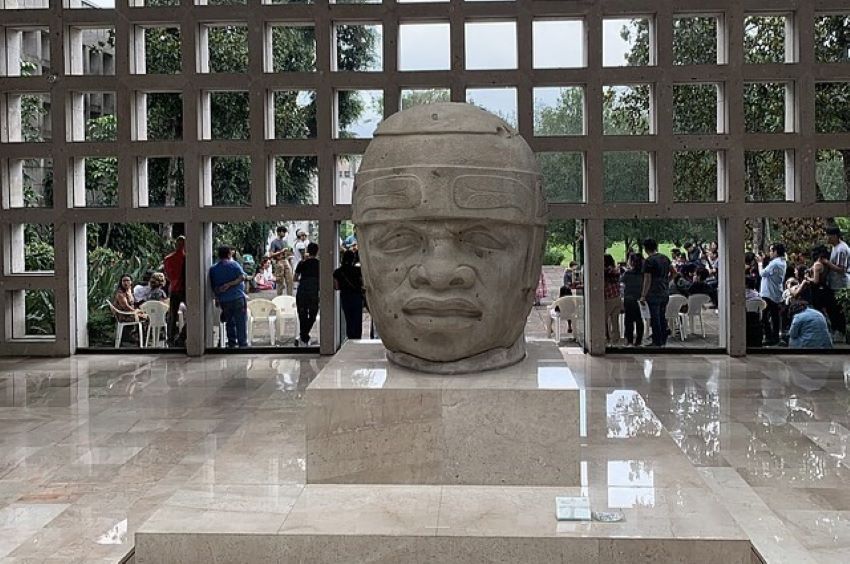Why is Mexico one of the oldest civilizations in the world?

Did you know that Mexico ranks amongst the oldest civilizations in the world as it was home to the Olmec, dating back to 1200 B.C.?
The Olmecs influenced various Mesoamerican cultures in modern-day Mexico and Central America, defining everything from religious practices to urban settlement patterns, architectural styles, and trade routes.
Artifacts found at Olmec sites place the culture among the earliest cradles of civilizations, alongside cultures in Iraq, Egypt, India, China, and Peru.
The Mother Culture of Mesoamerica
The Olmec culture, known as the “Mother Culture,” laid the early foundations that influenced the subsequent cultures of Mesoamerica. It emerged during the Preclassical Mesoamerican period (2500 BC to 200 AD) in what is today the southeast of Veracruz and western Tabasco in the Gulf of Mexico.
Because it is unknown how this civilization referred to themselves, the name “Olmec” was given by archaeologists based on the presence of rubber in the areas where this civilization thrived. It is derived from the Nahuatl (Aztec) word “Olmecatl,” which means “inhabitant of the rubber country.”
Both the cultural characteristics and artistic style of the Olmecs extended beyond the Gulf region, spreading from the Mexican states of Morelos to Guerrero and Chiapas to the Guatemalan Pacific coast and Costa Rica. This prevalent influence may be attributed to the extensive trade network established during that period.
Contributions of the Olmecs

Art: The Olmecs are noted for their colossal basalt heads, raging between 8 to 9 feet tall and weighing 20-40 tons. These uniquely Olmec monoliths have striking facial features and appear to be wearing helmets.
Other colossal sculptures include altars, stelae (upright slabs), and statues.
Sports: As the oldest culture on record in the Americas, experts believe the Olmec invented the ball game or pok-ta-pok, a ceremonial team sport played by Mesoamerican civilizations, including the Mayans and the Aztecs.
Writing and science: The Olmecs are also credited with the creation of writing and epigraphy in the Americas, as well as the development of calendars, which later influenced cultures such as the Maya and Nahua. Scientists also believe that the Olmecs were the first Mesoamerican people to understand the concept of zero.
Religion: the Olmecs introduced the cult of the jaguar, which is present in all Mesoamerican cultures.
Urbanism: the Olmecs built what archeologists consider the first planned city in pre-Hispanic Mexico: La Venta in Tabasco. Beyond its architectural achievements, the famous Olmec heads were unearthed in the city.
Additionally, they are credited with discovering the first conduit drainage system in the Americas.
La Venta’s monumental earthen architecture, great sculptural collection, jade artifacts, and massive offerings are unique in the pre-Hispanic world.
Other important Olmec archeological sites include San Lorenzo (the oldest Olmec city) and Tres Zapotes (the last Olmec city) in Veracruz.

Pre-Hispanic cultures influenced by the Olmecs
Despite the Olmecs’ intellectual and cultural achievements, their culture declined significantly between 400 and 350 B.C. for unknown reasons. However, other cultures rose after the Olmecs, further enriching Mexico’s historical wealth.
Next is a timeline of the most important pre-Hispanic civilizations that followed the Olmec in today’s Mexico.
Zapotec (200 B.C. – 500 B.C.)
The Zapotecs, known as Ben Zaa in their language (“the people of the clouds,”) are the oldest group in the Oaxaca region. Their main city was Monte Albán, now one of Mexico’s most visited archeological sites.

Maya (400 B.C. – 200 A.D)
This is one of the best-known cultures of Mesoamerica. It developed over an approximate area of 325,000 km2, covering parts of Chiapas, Tabasco, the Yucatan Peninsula, and part of Central America.
One of the 7 New Wonders of the world is the Maya archeological site of Chichen Itzá.
Teotihuacan (100 B.C. – 600 A.D.)
The Teotihuacan culture thrived in the Teotihuacán Valley, central Mexico. Their city, Teotihuacan, is considered one of the most intricate cities of the ancient world. This culture is recognized for controlling the deposits of obsidian, the most precious commodity of the time in Mesoamerica.
Toltecas (800 A.D. – 1200 A.D.)

Known as the “master builders” of Mesoamerica, the Toltecs capitalized on the decline of Teotihuacan to strengthen their power. Their influence spread throughout the central plateau in what is today Tlaxcala, Hidalgo, Ciudad de México, Mexico state Morelos and Puebla.
Mexica (1345 – 1521)
After a group of Aztecs departed from the mythical Aztlan and settled in Tenochtitlan (present-day Mexico City), the Mexica empire was established. This civilization is the most extensively documented in all of Mesoamerica and was the largest empire of the time.
The fall of Tenochtitlan in 1521 resulted in the fall of all other pre-Hispanic civilizations to the Spanish crown. From the ruins emerged the new capital of the colony of New Spain, marking the end of a long line of Mesoamerican civilizations that started with the mother culture of them all: the Olmec.
Gabriela Solis is a Mexican lawyer turned full-time writer. She was born and raised in Guadalajara and covers business, culture, lifestyle and travel for Mexico News Daily. You can follow her lifestyle blog Dunas y Palmeras.
Source: Mexico News Daily

